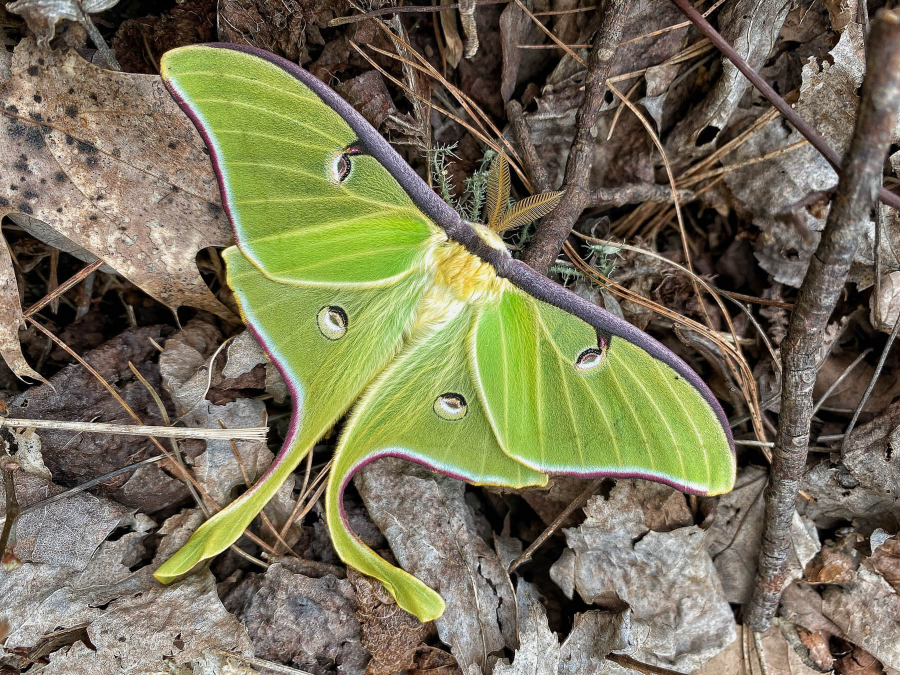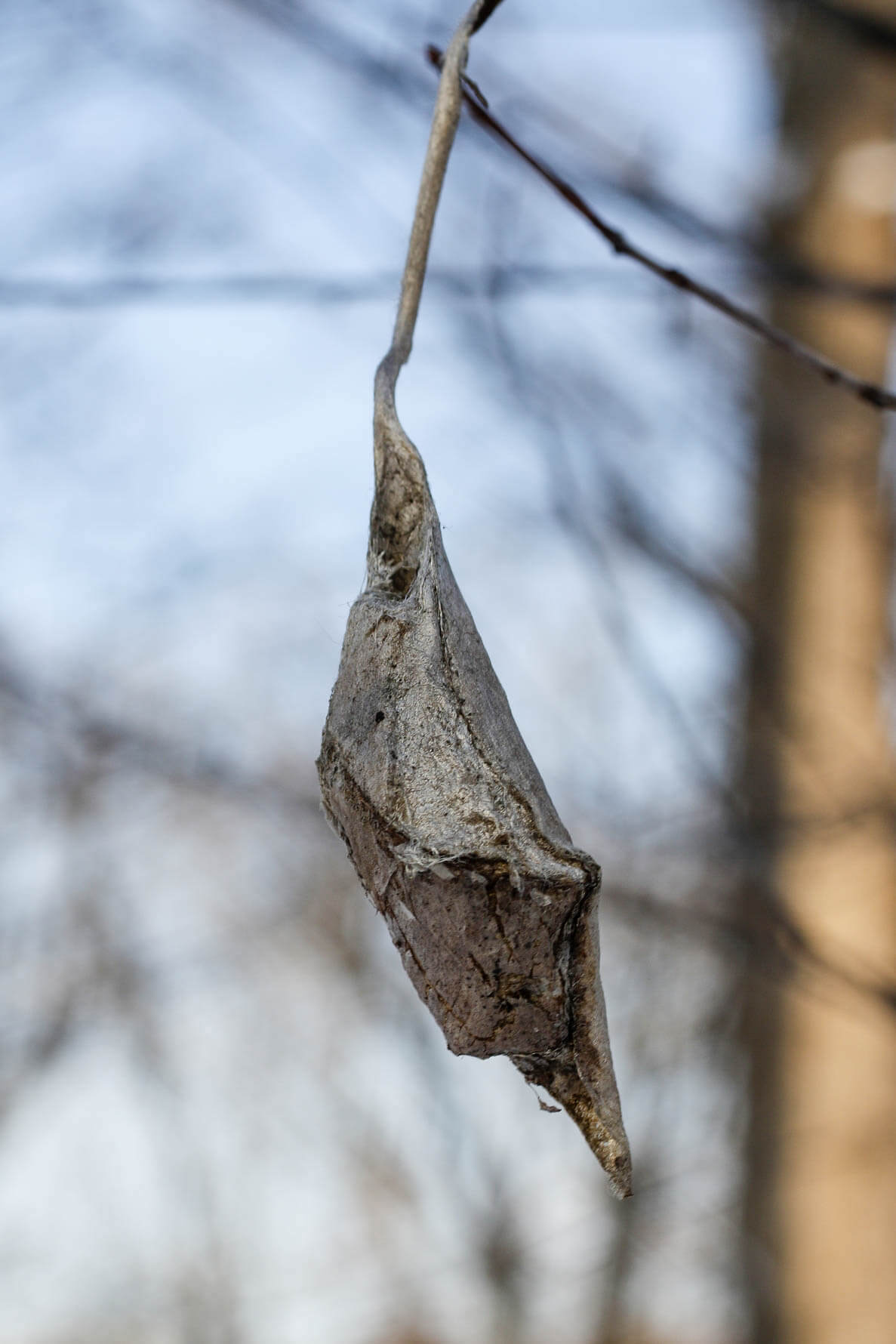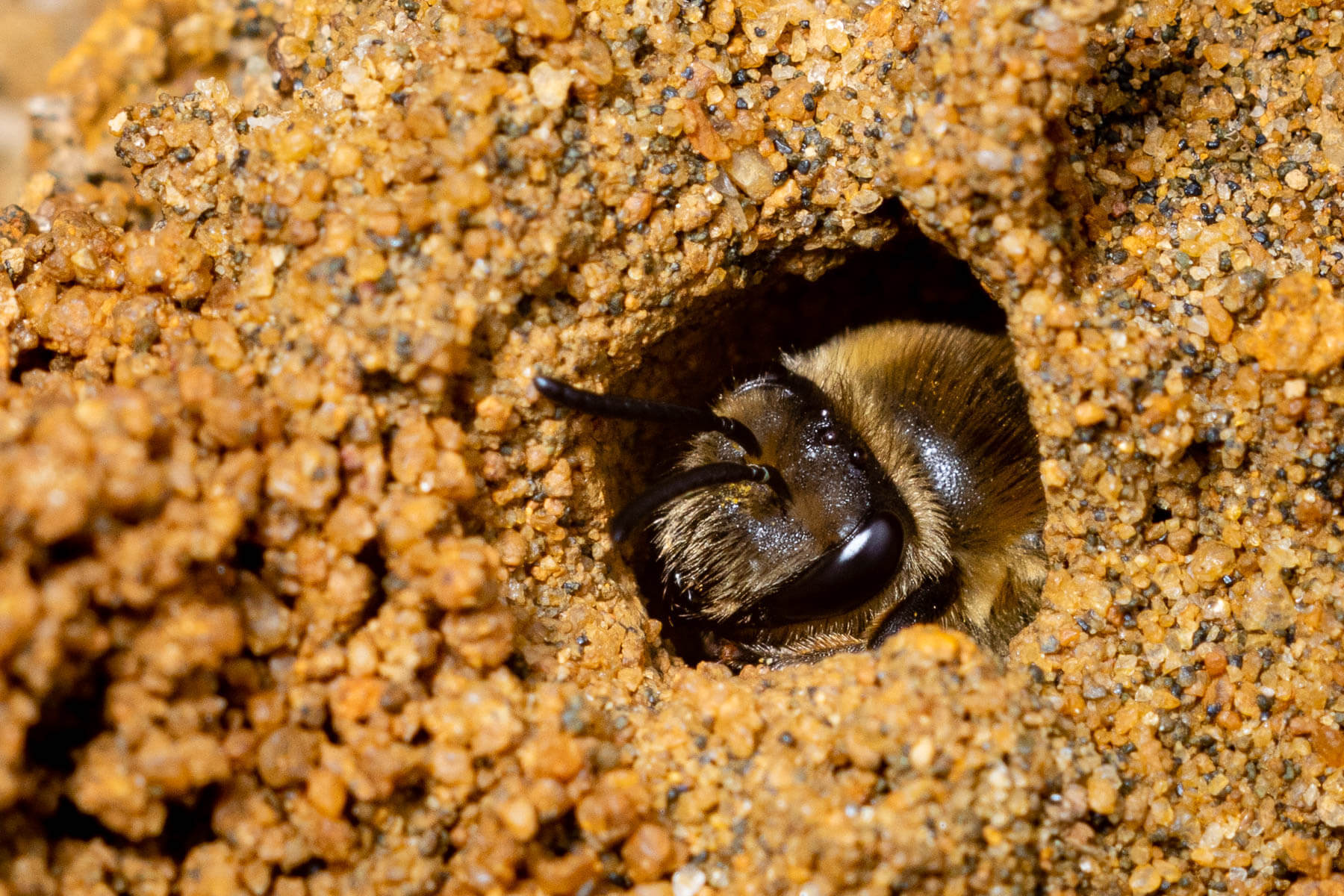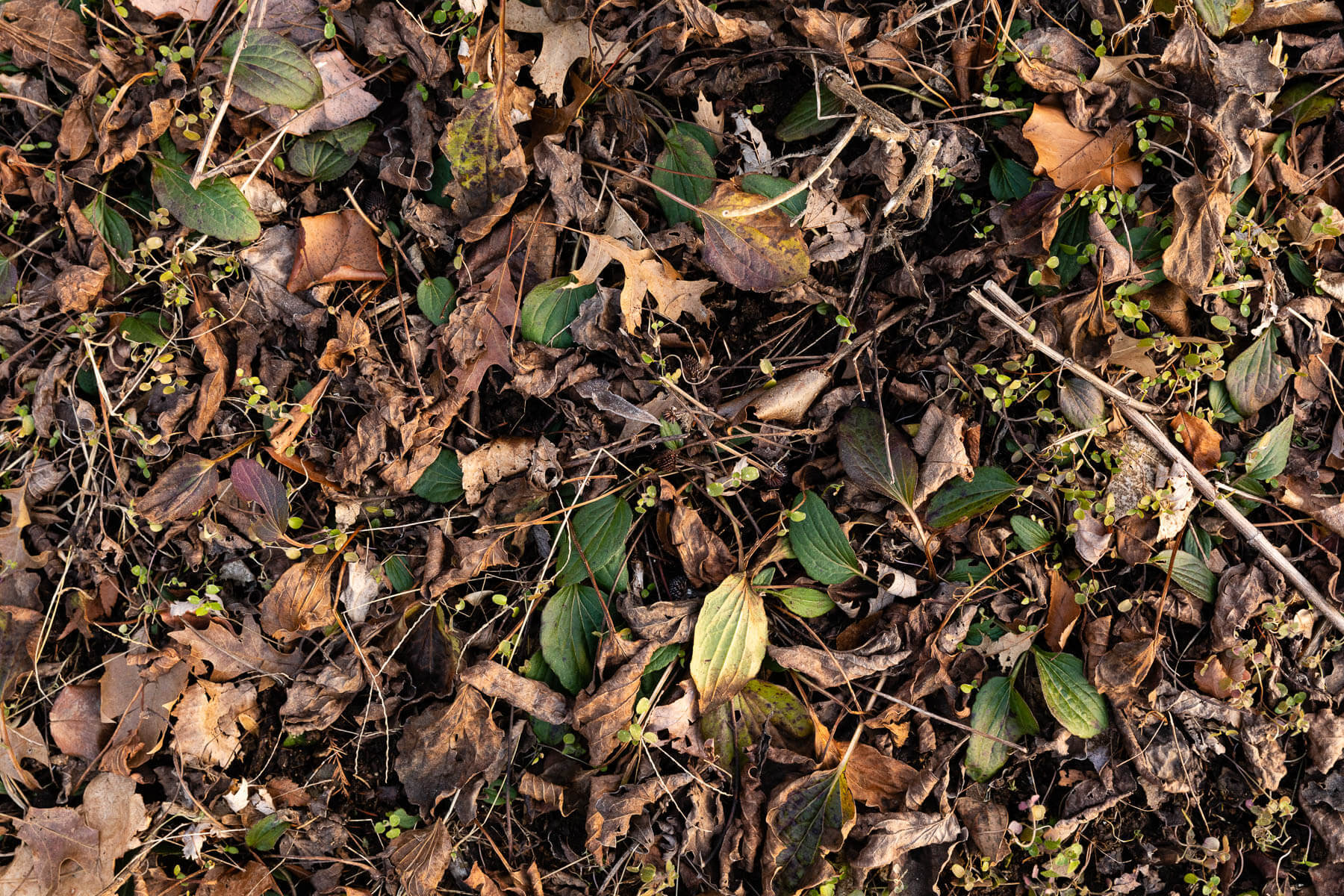Life under the fallen leaves

Spring and summer are when the world comes alive. We get to see moths and butterflies flapping their wings, birds eating insects, and bees buzzing around flower heads during warm days. But all that humming activity does not simply pop into existence. The life of spring is living within the fallen leaves and stems left from the winter—and we’re sweeping them away in spring cleanups. Before you reach for those bags and rakes, let’s take a peek beneath the leaves.
The insects living under your leaves
The painted wings of Lepidoptera delight in spring and summer, but where do those moths and butterflies go in winter? Creating that fabulous wing color takes time, preparation and a whole lot of safety. Butterflies in their chrysalis (hard, protective skin covering) and moths in their cocoons (wrapping of silk) during the pupa stage cannot move away from danger, so they instead protect themselves with camouflage and hide under leaves.

The long, fluttery-tailed and softly green luna moths start their life journey in a cocoon buried under fallen leaves. Adult luna moths find each other with pheromones and then lay eggs on a selection of host trees that include persimmons, white birch, hickories and sweet gums. After feasting, the caterpillars spin papery brown cocoons that fall into the leaf litter. There in the fallen leaves, the luna remains and grows to its beautiful adult form. Also known as “American moon moths,” the stunning lunas are a favorite snack of bats.
The show-stopping Great Spangled Fritillary is a butterfly with orange and black open wings that sparkle with silver on the underside. These butterflies rely on leaf litter for their survival. They spin their chrysalis in June, feed on bee balm, asters, milkweed, passion flowers and other floral favorites in late summer, and lay their eggs on violets in August or September. Three weeks later when the caterpillars hatch, they snuggle into the insulating leaf litter for the winter. When the caterpillars emerge in May, they feed on the violets at night and, during the day, use their leafy shelter as protection from the sun.

The massive Promethea silkmoth is a gorgeous insect with a 3-4 inch wingspan and a penchant for crispy-leaved cocoons. The adults do not feed, but meet up to mate in late afternoon and flap around the many host plants that will feed their young. When ready to pupate (enter the transitional stage between immature and mature life stages), a Promethea silkmoth caterpillar will wrap a leaf around itself with silk to overwinter as a pupa, perfectly concealed on a bare stem inside that dead leaf.
More than a chrysalis or cocoon gets swept up in spring clean-ups. Ladybugs, those charming and red shiny half-spheres, also overwinter in the leaf litter. Bumble bee queens will overwinter just below the surface of the soil, where leaf cover offers them warmth. Many native bee species will nest in the bare ground or in hollowed-out stems, habitats which are often disturbed during early garden tending. Arachnids and other insects make the leaves their home, which also means those leaves become a feast for songbirds. The fireflies that alight the night are actually beetles, and they spend most of their lives on the ground in a larval stage. While fireflies used to be a common sight, they are disappearing. Keeping undisturbed areas in your yard is one way to provide habitat and hopefully, a chance for your yard to glow with their flickering lights on summer nights.
What to do with leaves

While not everyone is comfortable with a yard full of leaves, a wild area is quite easy to do. “Wild area” does not mean unmanaged—rather, wild areas are designed for wildlife, meant to provide habitat and reintegrate that area of the yard with the wider ecosystem. If you are new to the idea of wild areas, review these tips for creating a beneficial and aesthetically pleasing wildlife-friendly yard. You can gather leaves from your yard and move them to that designated habitat—just remember that those leaves may already be supporting life and use a rake rather than a blower or the chopping blades of a mower.
Leaves also provide a free and excellent mulch. If a wild area doesn’t sound like something you want, you can collect your leaves into a pile to use deliberately as garden mulch for your landscaping.
No matter what you do with your leaves, one of the best choices you can make for wildlife is to wait. Many creatures are overwintering in the leaves, which means they will vacate when the warmer days arrive. To continue enjoying those butterflies and bees, wait to begin clearing winter debris and gathering leaves until temperatures are consistently(at least one week) above 50 degrees during the day. Seasonal changes vary from year to year, but this temperature guideline is a good rule of thumb for giving overwintering insects time to emerge—and saves you the time and labor of early garden cleaning. Leaving the leaves in your yard is good for the soil, the songbirds, the butterflies and the bees—and saving the insects is good for your plants.

Comments
Thanks so much for this informative article!! Great and easily doable ideas!
Nicely done! I need to share this at next Master Gardener meeting......and next Wild Ones meeting.
This link to this informative article appeared in my local Nextdoor feed in November, just as my town (which is a designated Tree City) is raking for communal leaf shredding and decomposition. The information here influenced me to gather my half-decomposed linden-tree matter and place in a ‘wild area’ of my corner property. Here’s to the health of the winged things!
Great article. Wishing that more people would heed the suggestions.
We need more pollinator homes with empty tubes of various sizes.
I NEVER rake my small back yard. Every year numerous birds visit it to glean insects and seeds, from cardinals and robins to wrens and thrashers.
Sure thing, Elizabeth! We will be in touch to walk you through the process.
Thanks for the 50 degree tip. I have wondered when to remove stems of flowers.
This care is so important for not just Chesapeake Bay but everywhere!
I would love permission to submit this article to my neighborhood magazine (with author credits of course). I have left my leaves this year, but live surrounded by zealous neatniks (I used to be one!).
The article is informative, but not too long!
Thank you!
Your comment has been received. Before it can be published, the comment will be reviewed by our team to ensure it adheres with our rules of engagement.
Back to recent stories